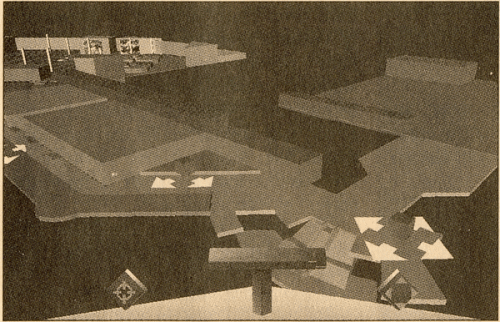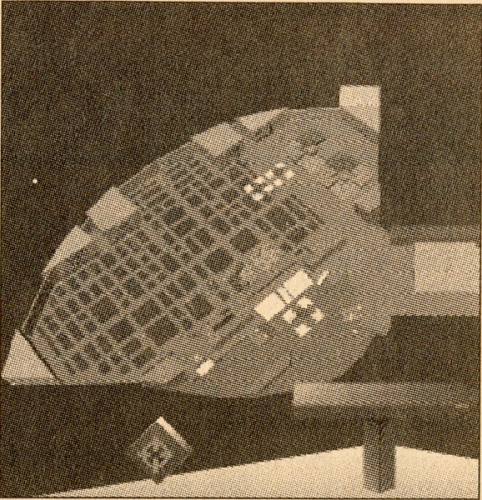SGI Constructs
The Los Angeles convention centre is in some ways at least as much like a city as LA is itself. Simple massive 5-lane highways, academic malls (the larger conference halls where courses were given, taking up to what seemed like 700 to 1000 people), and then the main shopping centre somewhere on the left of the building - the trade show floor. Carting a horde of 30-40.000 visitors around a building and leaving them with the illusion that they know where they are going takes more than giving them a map and a list of room numbers. Apart from the tagging method that enabled people to spot each other's professional status a mile off, attempts were made both by both the Siggraph organisers themselves and one of the major exhibitors, to present a dynamic map of the whole building - including relatively detailed levels of information about exhibitors, user direction and place.

This last effort was made by a company whose profile didn't exactly need to get any higher: Silicon Graphics. They, together with their consultants at "Construct", a web design co. based in San Francisco with extensive experience in the use of VRML, devised and designed the "GraphicsNet Kiosk System": With 18 Silicon Graphics WebFORCE Indy Workstations distributed around the LA convention floor, all connected via ATM to a Challenge/L server in the Silicon Graphics booth on the show floor, the kiosks used WebSpace Navigator to present a VRML interface which allowed users to explore the Centre as a realtime virtual environment.

Using advanced features such as level of detail (LOD) switching - to aid clear perception of the virtual space and the huge number of booths and companies exhibiting - and dynamically updating video texturing which enabled users to leave snapshots of themselves in the social space "Wizard's World", many different attempts were made to inject dynamic elements into the space; either to aid navigation - such as the growing icons (toilets, coke bottles and telephone receivers which grew if you clicked on them, no matter how far they were removed in physical distance) or to create social spaces such as the previously mentioned Wizard's World which apparently became very busy with people leaving their snapshots behind and chat about those of other users.
Mute Books Orders
For Mute Books distribution contact Anagram Books
contact@anagrambooks.com
For online purchases visit anagrambooks.com






